Iran tested a wide variety of weapons, including cruise missiles, torpedoes and suicide drones, during an annual war game between November 7 and 9. The Zolfaghar-1400 exercise, named for Imam Ali’s sword, was held around four key waterways – the Strait of Hormuz, the Sea of Oman, the Red Sea and the Indian Ocean – an area totaling more than 386,000 square miles (1 million square kilometers). About a fifth of the world’s oil passes through the Strait of Hormuz.
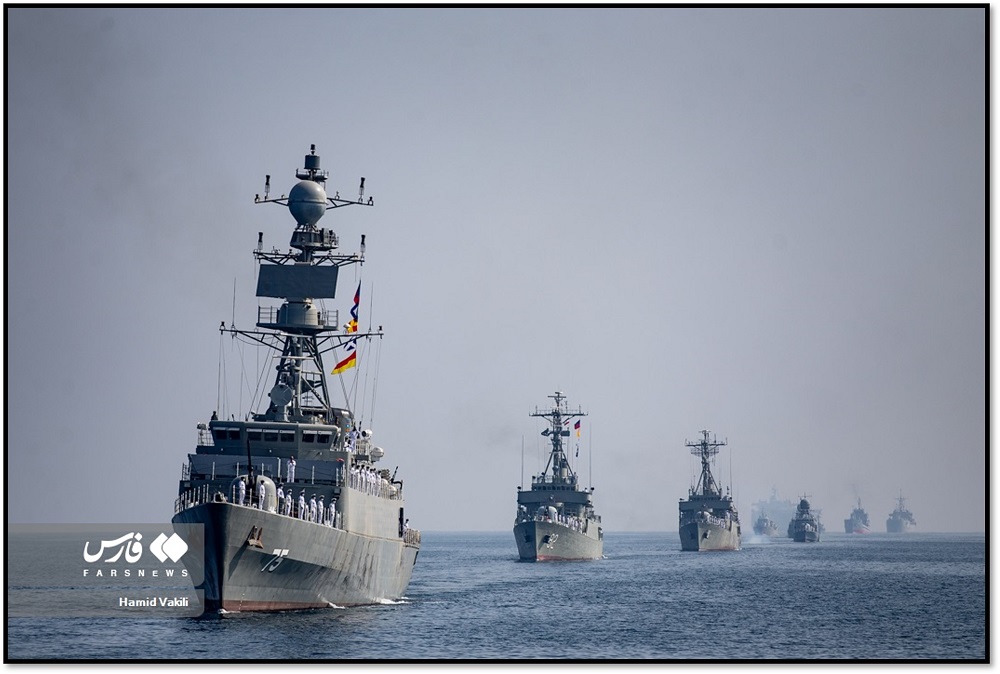
Iran’s conventional navy, army, air force and air defense force participated in the war game, although the Revolutionary Guards did not. The goals were to test military capabilities at sea, both offensively and defensively, and to deter Iran’s adversaries. “This exercise is a serious warning to our enemies and those who have ill intentions towards Iran,” Rear Admiral Mahmoud Mousavi, the spokesman for the war game, said on November 7. Major General Gholam Ali Rashid, commander of Khatam al Anbiya Headquarters, added that Iran’s military was ready to maintain the “security, stability and territorial integrity of Iran against” the United States and Israel.
Iran claimed that U.S. drones, including an MQ-9 Reaper combat drone and RQ-4 Global Hawk surveillance drone, approached the exercises. But they “changed their route after approaching the borders of the Islamic Republic of Iran following the air defense’s interception and decisive warning,” according to state broadcaster IRIB.
Related Material: Iran’s Arsenal of Cruise Missiles
Related Material: Iran’s Drone Fleet

On November 3, Iran’s elite Revolutionary Guards claimed that it had thwarted an attempt by the U.S. Navy to detain a tanker carrying Iranian oil in the Sea of Oman. The United States rejected the Iranian account. “It’s a bogus claim,” Pentagon Press Secretary John Kirby said. “The only seizing that was done was by Iran.” U.S. officials said that Iran seized a Vietnamese-flagged tanker on October 24 while U.S. forces monitored the incident.

During the war game, Iran deployed domestically-produced weapons and vehicles as well as items procured under the monarchy, including F-4 Phantom fighter bombers from the United States.
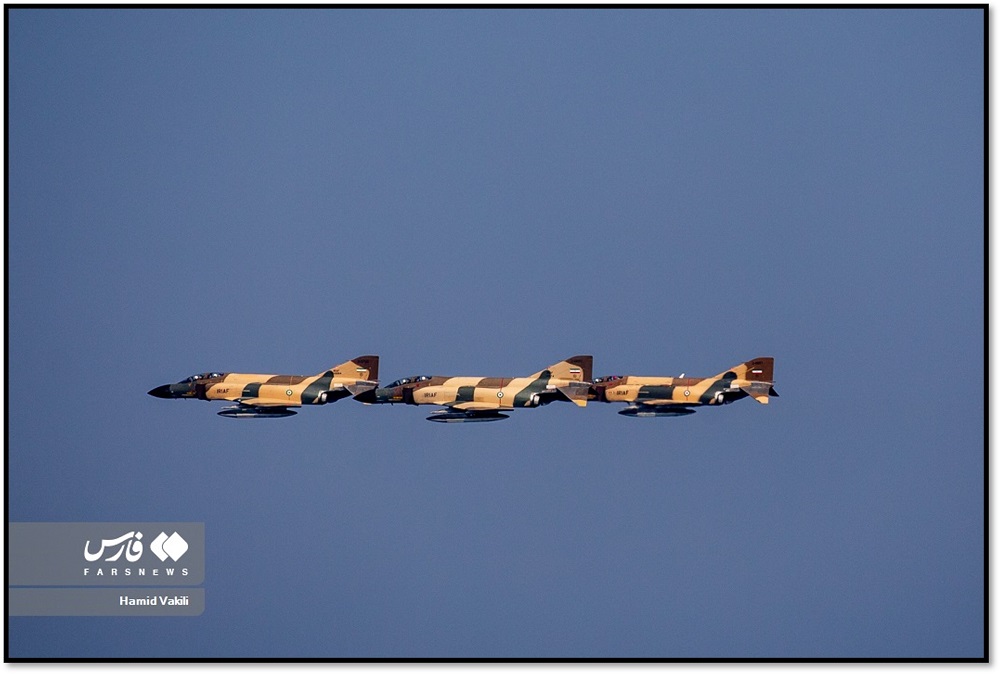
During Zolfaghar-1400:
- The army launched Qader anti-ship cruise missiles from a land missile site at a vessel 124 miles (200 km) away and another target 186 miles (300 km) away. The medium-range Qader was developed in Iran, based on the Chinese C-802 missile, and has a maximum range of 186 miles (300 km).
- The navy fired a Nasr anti-ship cruise missile from a guided missile destroyer, successfully hitting its sea surface target. The Nasr, based on the Chinese C-704 missile, has a range of 24 miles (38 km).
- The navy deployed the domestically developed speedboats – the Azarakhsh, Shahab, and Ra’d – equipped with rocket launchers.
- The navy deployed Tareq and Qadir submarines, also domestically produced, which fired Valfajr torpedoes at mock targets.
- The air force conducted maneuvers with F4-Phantom and Mirage fighter jets as well as combat helicopters.
- The air defense force hit targets using the domestically developed 15 Khordad and Mersad air defense missile systems.
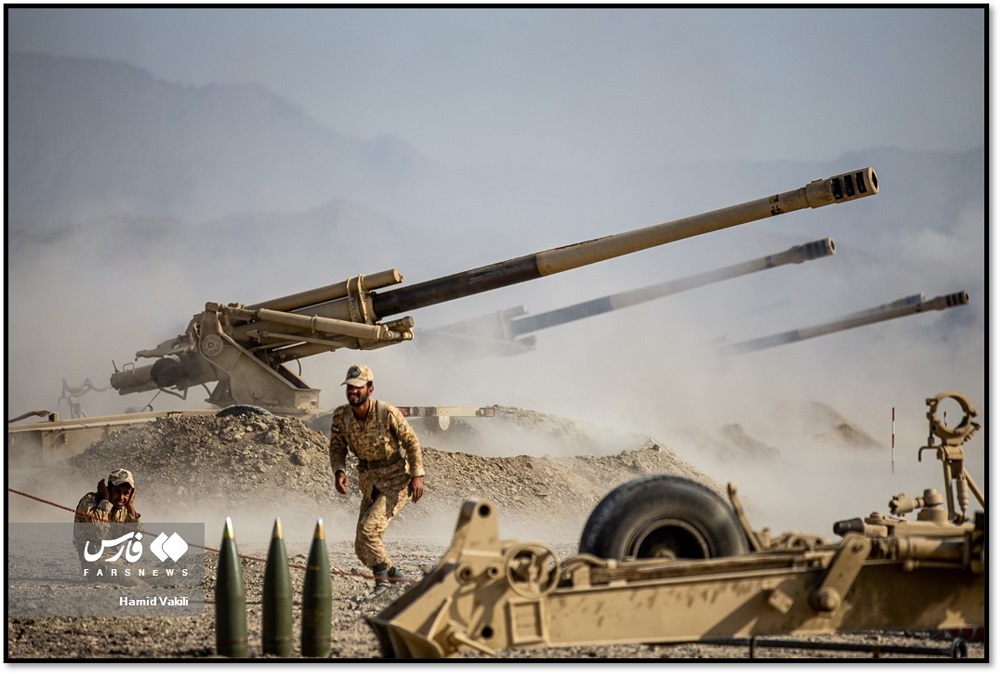
Missiles
Iran’s military tested a variety of short-range and medium-range missiles from land, sea, and air launch sites. “Today, the Navy’s missile units are stationed along the coasts of the country and stand ready to bury any aggressor who intends to encroach on the waters of the Islamic Republic of Iran…at the bottom of the sea,” Admiral Moussavi said. Iran also displayed its naval capabilities through exercises with the Tareq and Qadir submarines, which fired torpedoes against surface and subsurface targets in the Sea of Oman.
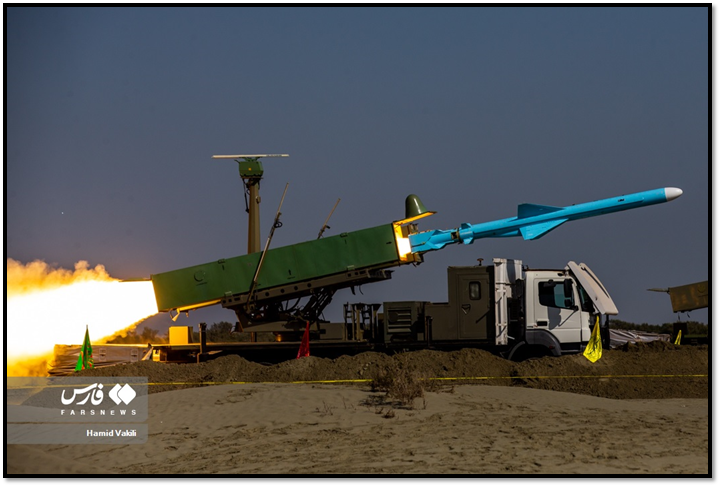
Drones
The military flew at least six types of domestically-produced drones during the war game, including:
- The Arash suicide drone, introduced in 2020, has a range of up to 1,243 miles (2,000 km) and can fly for up to 7.5 hours. An Arash appeared to hit a target on the side of a mountain in video footage from the drill, but the test range was not given.
- The Simorgh drone, introduced in 2019, is the navy’s version of the Shahed-129, a heavy-weight drone used for both combat and reconnaissance. It has a range of 930 miles (1,500 km) and can fly for up to 24 hours.
- The Ababil-3, introduced in the mid to late 2000s, is medium-weight drone primarily used for surveillance but can be fitted with weapons. It has a range of up to 93 miles (150 km) and can fly for up to 4 hours.
- The Yasir, introduced in 2013, is a light-weight drone primarily used for surveillance. But the conventional army deployed a suicide variant in 2014. It has a range of 124 miles (200 km) and can fly for up to 8 hours.
- The Mohajer-4B, introduced in 2014, is a medium-weight drone used for surveillance and reconnaissance. It has a range of 150 km and can fly for up to 6 hours.
- The Sadegh-1 is a variant of the Mohajer-4 that can reportedly carry missiles to target enemy aircraft. The Sadegh-1 variant has been used to collect data on ships in the Persian Gulf.

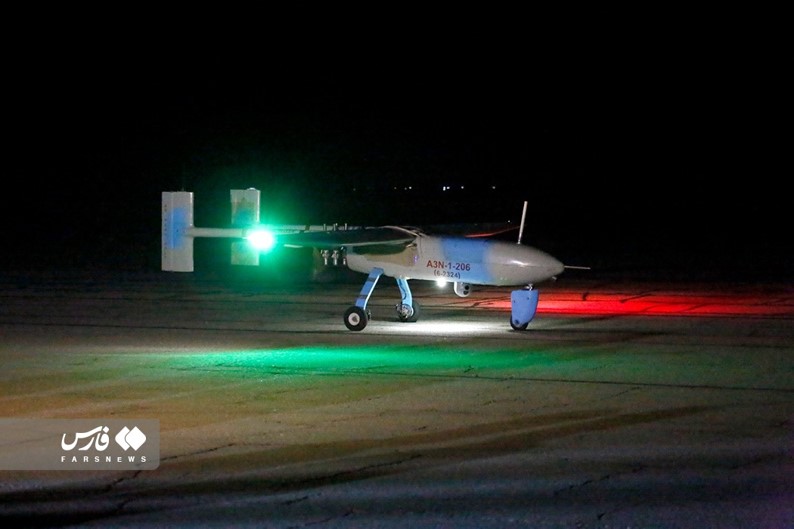
Brett Cohen, a research assistant at the Woodrow Wilson Center, and Garrett Nada, managing editor of The Iran Primer assembled this report.
